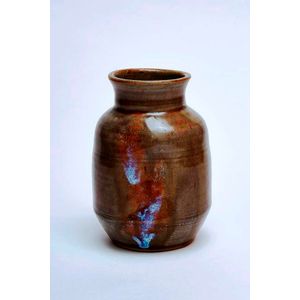Turquoise and Ivory Antique Pendant
You must be a subscriber, and be logged in to view price and dealer details.
Subscribe Now to view actual auction price for this item
When you subscribe, you have the option of setting the currency in which to display prices to $Au, $US, $NZ or Stg.
- Ivory - Ivory is a hard white material that comes from the tusks of elephants, mammoth, walrus and boar, or from the teeth of hippopotamus and whales. The ivory from the African elephant is the most prized source of ivory. Although the mammoth is extinct, tusks are still being unearthed in Russia and offered for sale.
Ivory has been used since the earliest times as a material for sculpture of small items, both in Europe and the east, principally China and Japan.
In Asia ivory has been carved for netsuke, seals, okimono, card cases, fan supports, animals and other figures and even as carved tusks.
In the last 200 years in Europe ivory has been used to carve figures, for elaborate tankards, snuff boxes, cane handles, embroidery and sewing accessories, in jewellery and as inlay on furniture. Its more practical uses include being used for billiard balls, buttons, and a veneers on the top of piano keys.
The use and trade of elephant ivory have become controversial because they have contributed to Due to the decline in elephant populations because of the trade in ivory, the Asian elephant was placed on Appendix One of the Convention on International Trade in Endangered Species (CITES), in 1975, and in January 1990, the African elephant was similarly listed. Under Appendix One, international trade in Asian or African elephant ivory between member countries is forbidden. Unlike trade in elephant tusks, trade in mammoth tusks is legal.
Since the invention of plastics, there have been many attempts to create an artificial ivory - Bezel - On a clock or watch, the bezel is the metal frame into which the watch or clock glass is fitted. In clocks, the bezel may include a hinge and a flange, in effect a door to the face of the clock. In jewellery the bezel is a band of metal with a projecting lip that holds the gemstone in its setting.
- Cabochon Cut in Jewellery - A cabochon cut is a type of gemstone cutting where the stone is cut and polished in a convex shape with a flat bottom and a domed top, with no facets. This type of cut is typically used for opaque or translucent stones that have natural patterns or inclusions that are best displayed in this type of cut. Examples of stones that are often cut as cabochons include turquoise, opal, and moonstone.
This item has been included into following indexes:
Visually similar items

A three piece Victorian 'Persian' sterling silver tea service, 1871 London, with maker's marks for Barnard & Sons limited, of delightful exotic form, the teapot with a tiered, waisted body, dome lid and a compressed lower body, having a fantastic dragon sp

Peter Rushforth (Australian, 1920-2015), Vase, wheel thrown stoneware with indentation to side, flowing pale celadon with chun glaze accent, artist's seal impressed near base, height 17.5 cm

A silver-plate chafing dish, circular with division, insulated base, screw handle; James Dixon. Diameter 26 cm

World War I & World War II ten miniature medal group as worn war and Victory medals, Territorial Force war medal, 1939-45 and Burma stars, war and Defence medals, George VI Coronation, long service medal and Edward VII Territorial Efficiency medal
